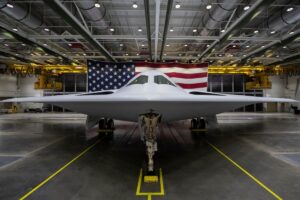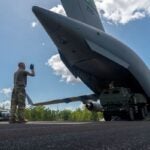
While the U.S. Air Force has classified nearly all design details of the Northrop Grumman [NOC] B-21 Raider bomber, dozens of onlookers, including a free-lance photographer, were on hand for the stealth plane's first flight on Nov. 10 over Palmdale, Calif., near the aircraft's development and production site at Air Force Plant 42. After the flight, the Air Force issued a statement that the "flight testing is a critical step in the test campaign managed by the Air Force Test…














